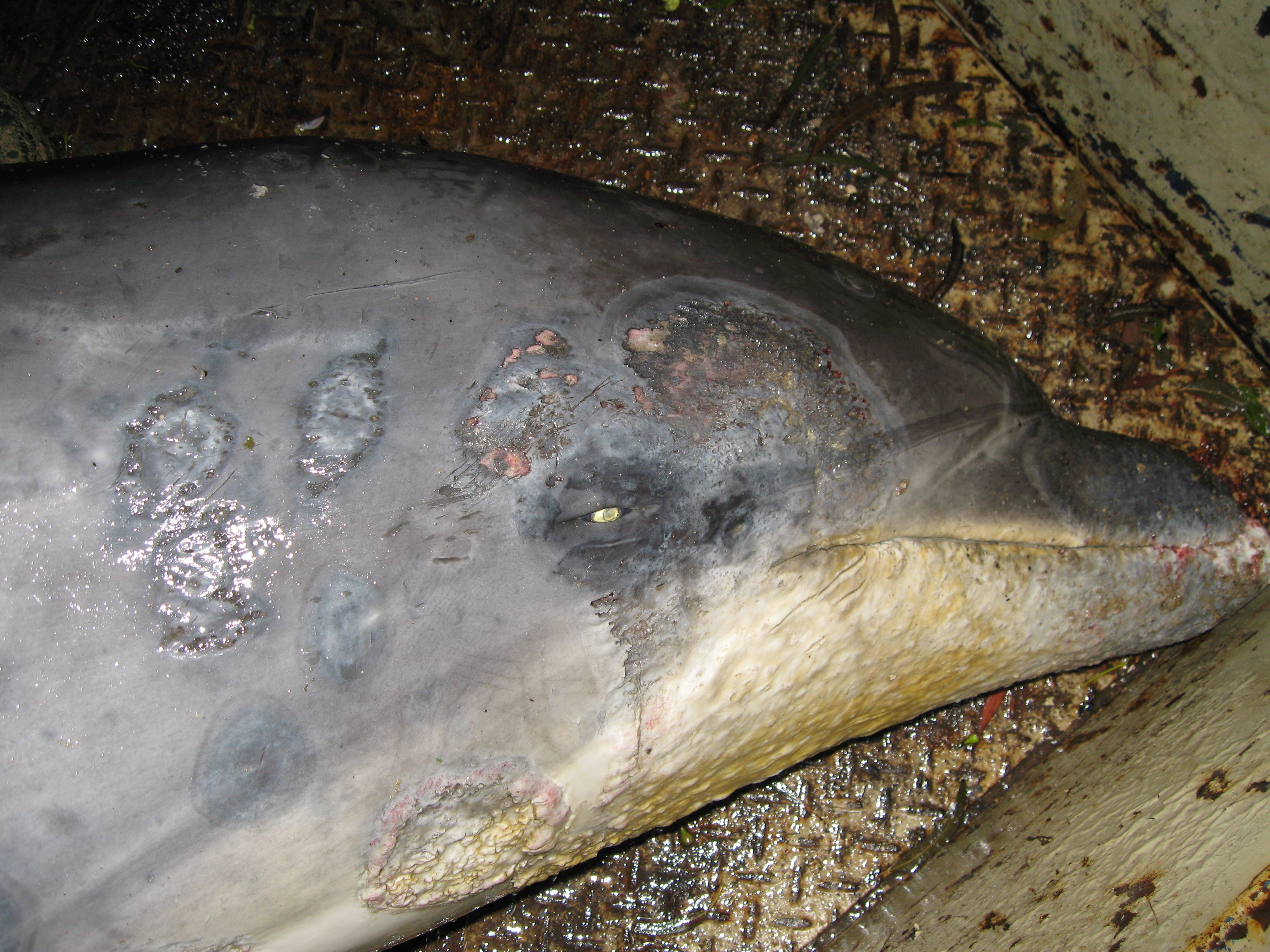Fatal skin disease in dolphins linked to climate crisis
It’s the first time that scientists have been able to attribute a cause to the condition since it appeared 15 years ago in bottlenose dolphins

A fatal skin disease in dolphins has been linked to the climate crisis, according to a new study.
The research, published this month in Scientific Reports, found that the condition is related to the drop in salinity of coastal waters caused by more frequent and devastating storms.
The study was conducted by a team from the Marine Mammal Center in Sausalito, California - the world’s largest marine mammal hospital - and Australian researchers.
It is the first time that scientists have been able to attribute a cause to the condition, known as “freshwater skin disease”, since it first appeared 15 years ago in bottlenose dolphins. The condition has been discovered in the marine mammals in different parts of the world.
“This devastating skin disease has been killing dolphins since Hurricane Katrina, and we’re pleased to finally define the problem,” said Dr Pádraig Duignan, chief pathologist at the Marine Mammal Center.
“With a record hurricane season in the Gulf of Mexico this year and more intense storm systems worldwide due to climate change, we can absolutely expect to see more of these devastating outbreaks killing dolphins.”
2020 broke the record for the number of Atlantic storms strong enough to be given names in a single season. The climate crisis is fueling powerful hurricanes, scientists say. This is because tropical cyclones use warm, moist air as fuel and, as oceans heat up, more of this fuel is becoming available.
Significant outbreaks of the disease have been discovered in recent years in dolphins swimming in waters off the US states of Louisiana, Mississippi, Alabama, Florida and Texas, along with Australia.
Where the outbreaks occurred, a dramatic drop in the saltiness of the water was the common factor.
Coastal dolphins can cope with seasonal variations in salinity in their marine habitats but they do not live in freshwater.
Severe hurricanes and cyclones, particularly if preceded by drought conditions, are dumping unusual volumes of rain that flip coastal waters to freshwater, the study noted.
After large storms like hurricanes Katrina and Harvey, which both battered the Gulf region, these conditions can last for months. Following Katrina in 2005, the deadly skin disease was first discovered on around 40 bottlenose dolphins near New Orleans.
As the climate crisis deepens, the outlook for dolphins is concerning. In Australia, the researchers note that an outbreak has impacted the threatened species of Burrunan dolphin.
However Dr Duignan said that the findings had shed light on the disease and would allow scientists and conservationists to figure out how to better protect coastal dolphin communities.
Separately, the International Union for Conservation of Nature’s “Red List” of endangered species published findings this month that said all four known freshwater dolphin species are threatened with extinction, in part due to the climate crisis.
Craig Hilton-Taylor, from IUCN, said the impact of human activity was a driver for many species being on the brink of being wiped out.
“All of these things are down to human activities, whether it’s direct hunting or fishing or harvesting of the species, to introducing invasive species, changing habitats to agriculture, urbanization, climate change,” he told AP. “The human footprint is everywhere.”
The tucuxi, a small gray dolphin found in the Amazon River system, is now listed as “endangered.” Its numbers have been severely depleted by human activity, including fishing gear, the damming of rivers and pollution. Previously there wasn't enough information to determine its status.
IUCN cites three other freshwater dolphin species — the Amazon river dolphin, the South Asian river dolphin and the Yangtze River dolphin in China, though it may already be extinct — as threatened, along with the Yangtze finless porpoise.
AP contributed to this report
Join our commenting forum
Join thought-provoking conversations, follow other Independent readers and see their replies
Comments


Bookmark popover
Removed from bookmarks